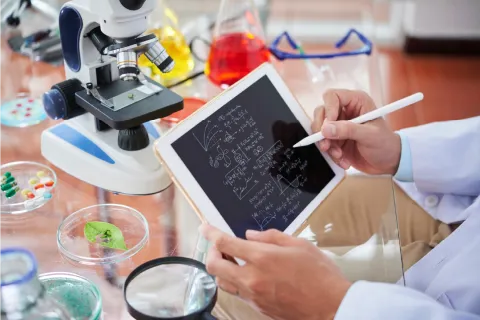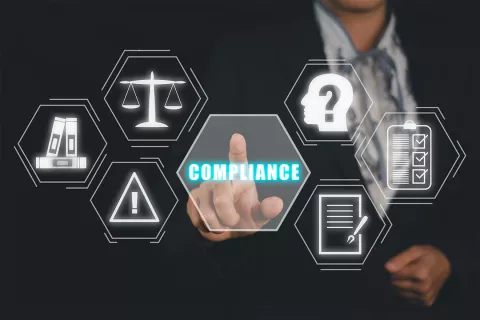
The specifics for medical devices refer to a set of technical and/or clinical requirements, other than a standard, that provides a means of complying with the legal obligations applicable to a device, process, or system. This includes the type of medical conditions the device is designed to diagnose, treat, monitor, alleviate, or prevent. It also includes the target patient population, the part of the body or type of tissue the device is designed for, and the medical conditions for which the device is intended (e.g., hospitals, clinics, home care settings). Examples include contact lenses for cosmetic purposes, piercing equipment, tattooing equipment, liposuction equipment, skin peeling devices, tattoo removal devices, hair removal equipment using laser or intense pulsed light, lipoplast equipment, and fillers implantation devices.
Limitations within the scope of application are often referred to as contraindications, which are specific situations, conditions, or patient groups for which the device should not be used because it may be unsafe or ineffective. These contraindications must be clearly stated by the manufacturer to ensure the safety and effectiveness of the device when it is used as intended.
The scope of the application must be consistent with the device's design, performance, and function and should be supported by clinical evaluation data. It should be described using objective, clear, and industry-accepted terms. Additionally, the intended use environment, such as the necessary environmental conditions (temperature, humidity, etc.) that may affect the device's safety and effectiveness, should be specified.
As per Annex VIII of MDR, they are classified into Class I, IIa, IIb, and III, which is based on the potential risk associated with their use.
Class I: These are devices with low risk, and they are provided into Class Is (s refers to sterile) and Im (m refers to measuring function).
Class IIa: These are devices with medium risk, classified under Class IIa. These devices require conformity assessment by the Notified Bodies (NBs) but do not need to undergo any clinical evaluation. However, they require clinical data for demonstration of conformity.
Class IIb: Medical devices with higher risk compared to Class IIa are classified under Class IIb. These devices require conformity assessment by the NB, which involves clinical evaluation. They have to meet more stringent requirements than Class IIa devices.
Class III: These are the devices with the highest risk, which pose the greatest risk to patients and users. These devices require conformity assessments by the NB for the assessment of device safety and performance.
Technical Requirement:
The products are required to comply with the common specifics, which are concerned with risk management and clinical evaluations, encompassing safety. The regulations require that the product fulfills the safety requirement and performance requirements, which include the distinction between sterile and non-sterile conditions and devices that are composed of absorbable substances. The clinical evaluation documentation must be adopted in the product lifecycle, which is based on the clinical data derived from Post-market Surveillance (PMS) and clinical investigation.
Devices without intended medical purpose are mandated by regulations to adhere to common specifications for risk management and clinical evaluations for safety. The aim is to ensure that the medical devices are safe and effective and to balance risks against the benefits.
The common specification for medical devices includes a broad range of criteria that ensure the safety, quality, and efficacy of these products. Here is an overview of the specifications related to materials, design, manufacturing processes, performance criteria, and testing methodologies:
Materials:
- Details of material identifications and specifications, including raw materials and components, must be provided.
- Complete chemical, biological, and physical characterization of the materials, especially those in contact with patients or critical to the device's function, must be provided.
Design:
- The design should include principles of operation, mode of action, and technical specifications such as chemical, physical, and biological properties.
- The device should meet relevant safety and performance requirements with reference to applied standards and guidelines.
- Novel features of the device should be explained, and any materials of human or animal origin should be clearly identified.
Manufacturing Processes:
- A detailed explanation of the manufacturing processes, including descriptions of raw materials, supplier control, and final product testing.
- Manufacturing should be conducted under controlled conditions with defined processes, qualified personnel, and appropriate equipment maintenance and calibration.
- Considerations for cleanliness, infection control, and packaging should be included.
Performance Criteria:
- Devices must be designed and manufactured to achieve the intended performance, which is in line with the generally acknowledged state of the art.
- Performance data should demonstrate suitability with regard to accuracy, sensitivity, specificity, and other relevant specifications.
- For In Vitro Diagnostic (IVD) devices, detailed information on performance characteristics like analytical sensitivity and specificity may be required.
Testing Methodologies:
- Verification and validation studies should be summarized to demonstrate compliance with the Essential Principles.
- Test reports on the product's performance under the manufacturer's quality control system should be provided.
- The testing methods used in the technical requirements of the product should be verified methods.
- Non-clinical and clinical study results, process validation studies, and software validation studies (if applicable) should be included.
Additional Considerations:
- The device's contact with the human body (direct or indirect) and the nature of any human or animal-derived materials should be identified.
- The technical documentation should include a Bill of Materials and identified raw materials used in packaging.
- Risk management and a system-level hazard analysis may be required to identify and control potential hazardous events.
Clinical Evaluation and Data Requirements:
Clinical evaluation is a primary requirement for devices without intended medical purpose. As the products are majorly new to the market, clinical evaluation has to be performed from scratch, and here comes the significance of transitional periods. Medical device regulation provides the Economic Operators (EOs), who include Subject Matter Experts (SMEs), the Notified Bodies (NBs), and the Member States. The transitional period is required for the agreements need to be made by the manufacturers. This approach is meant to ensure a seamless transition disruption in the medical device markets. Transitional provisions for each of the devices are mentioned below:
Class I Devices: Excluding custom-made devices, manufacturers are required to declare conformity after preparing technical documentation. For medical devices with sterile condition, the NB is involved in a limited aspect of maintaining the sterile condition mentioned in the regulation.
Class IIa Devices: It includes the assessment of technical documents of at least one representative per category. Also, manufacturers can opt for a technical documentation approach.
Class IIb Devices: Specific rules are applied to Class IIb devices based on their use and the potential risks. Surgically invasive devices for short-term usage are classified as Class IIa unless they meet the criteria for Class III devices.
Class III Devices: These devices are subjected to the most stringent regulations due to their higher impact on the human body. These devices undergo rigorous conformity assessment to ensure safety and efficacy.
Clinical data requirements for medical devices typically include a range of studies and trials designed to evaluate the safety, clinical performance, and/or effectiveness of the device. The performance expectations in clinical settings are that the device achieves its intended purpose, as claimed by the manufacturer, with an acceptable benefit/risk ratio. Here are the key aspects of clinical data requirements and performance expectations:
- Clinical Trials and Investigations: Clinical trials are systematic studies conducted to evaluate the safety, clinical performance, and/or efficacy of a medical device. These may include pre-market and post-market clinical trials, feasibility studies, and studies conducted for marketing approval.
- Clinical Data Sources: Clinical data can be derived from clinical investigations, literature reviews, post-market data, and other clinical experience data (also known as Real World Data (RWD) ). Manufacturers are responsible for identifying relevant data and determining the extent of data needed for a complete clinical evaluation.
- Clinical Evidence: Clinical evidence must include clinical safety and performance data and may also encompass pre-clinical and analytical data derived from bench testing. The evidence should demonstrate compliance with the relevant general safety and performance requirements.
- Comparator Devices: Clinical evidence may also come from studies involving comparator devices, which are used to demonstrate the safety and performance of a new medical device by comparing it with an existing device.
- Clinical Performance Studies: These studies are designed to assess the ability of a medical device to achieve the intended clinical outcomes. They should be scientifically robust and statistically valid, with clear inclusion and exclusion criteria for subjects.
- Analytical Performance (for IVDs): For In Vitro Diagnostic (IVD) medical devices, analytical performance refers to the device's ability to detect or measure a particular analyte, characterized by specificity and sensitivity.
- Post-Market Clinical Follow-Up (PMCF): Manufacturers may be required to conduct Post-market Surveillance (PMS) and clinical follow-up to continue assessing and verifying the clinical safety and performance of the device after it has been marketed.
- Clinical Evaluation Reports (CERs): Manufacturers must prepare CERs that summarize the safety and performance data, demonstrating compliance with the relevant safety and performance requirements.
- Regulatory Guidelines: Manufacturers should refer to specific Regulatory guidelines such as "Technical Guidelines for Clinical Evaluation of Medical Devices," "Guidelines for the Design of Clinical Trials of Medical Devices," and "Technical Guidelines for Accepting Overseas Clinical Trial Data of Medical Devices" for detailed requirements.
- Risk-Based Approach: The clinical data requirements may vary based on the medical device risk classification, with higher-risk devices typically requiring more extensive clinical evidence.
- Special Considerations: Certain populations, such as paediatric patients or under-represented groups, may require specific clinical data to ensure the safety and effectiveness of the device for these populations.
Conclusion:
The specificity of the medical devices includes the definition, usage, and considerations towards the environment. The technical requirements have stringent criteria for the materials used and the design, ensuring safety and efficacy, and the clinical data requirements include ensuring safety and performance in diverse functions. Adhering to the stringent Regulatory guidelines can be challenging.
To counter this, a holistic approach is required to meet the stringent standards set by the Regulatory bodies. Freyr provides comprehensive Regulatory support to help manufacturers place their medical devices. Do you require end-to-end Regulatory support? Schedule a call with us today! Stay informed. Stay compliant.









